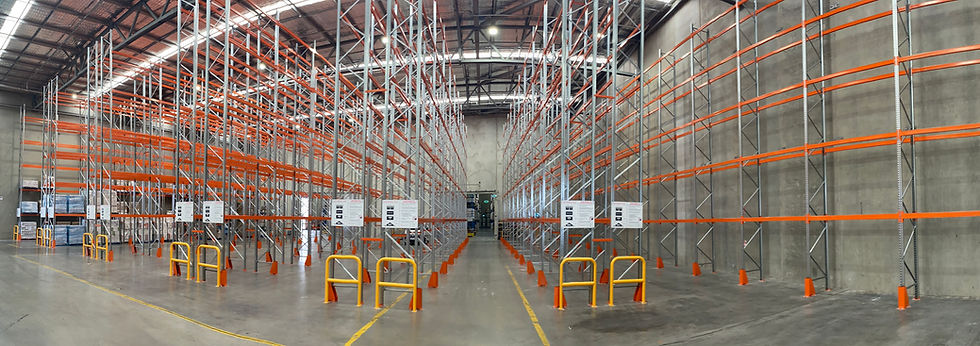Understanding Pallet Racking Beam Profiles: Why Box Beams Are the Industry Standard
- mattb645
- Aug 23
- 2 min read

In pallet racking design, beams are one of the most critical components, responsible for carrying the load of pallets safely and reliably. The shape, or profile, of a beam plays a major role in determining its strength and performance. Over the years, the industry has experimented with many different beam designs, but today there is a clear winner: the box beam.
A Look Back: Early Beam Profiles
In the early days of pallet racking — before rigorous testing and Australian Standards were introduced — manufacturers trialled a variety of beam profiles. Common shapes included:
Channel beams
I-section beams
Other open profiles
While these designs were functional, they often lacked the strength and torsional resistance required for long-term durability. Overloading, twisting, and premature wear were common issues.
Why Box Beams Proved Superior
Through years of testing and practical experience, it became clear that box beams significantly outperformed other profiles. Their closed, tubular shape provides:
Higher strength-to-weight ratio
Better resistance to twisting and lateral forces
Improved durability under repeated loading and unloading
More consistent deflection performance
These benefits make box beams not only stronger but also more reliable in real-world warehouse conditions.
The Modern Standard
Today, all serious pallet racking manufacturers and suppliers have adopted box beam designs exclusively. This is not just due to preference, but because industry testing and compliance standards have proven the superiority of the box beam profile.
Variations in Box Beam Design
Although all modern beams are box-shaped, there are important differences:
Beam depth (height of the profile) – deeper beams generally provide higher load capacities.
Steel thickness – thicker materials increase load rating and stiffness.
Length of the beam – longer beams will deflect more under load and therefore require careful selection based on design criteria.
When selecting beams, it’s essential to use the manufacturer’s certified load charts and ensure compliance with AS 4084-2023 Steel Storage Racking.
Final Word
The evolution of pallet racking beam profiles shows how far the industry has come. What started as trial and error with channels and I-sections has now been replaced by decades of testing, engineering, and safety standards. The result is the box beam: the benchmark for strength, safety, and compliance in every modern warehouse.
At Pallet Racking Inspections, we not only inspect beams for damage and deflection but also verify that the beam profiles installed are appropriate for the loads being carried.



